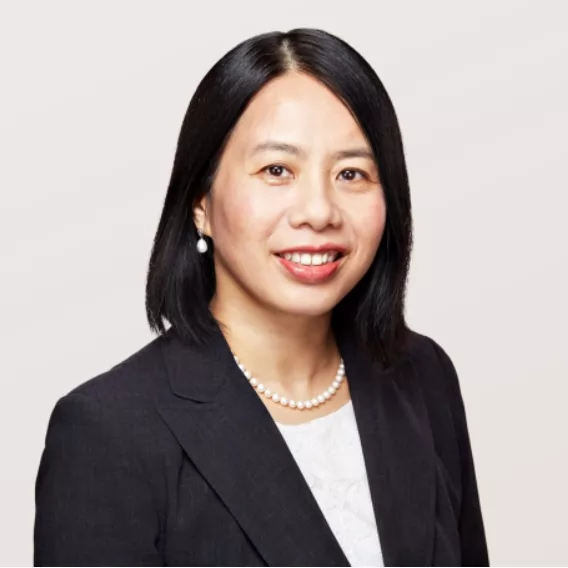Many patent owners are interested in trying to draft a single patent application that will serve them in several countries. This is ambitious, since there are many differences between various countries' patent systems, but perhaps not impossible. The patent drafter just needs to be aware of and try to balance all the different requirements in the single patent application. This series of articles endeavors to outline some important considerations when drafting a single patent application for several major countries and regions.
In our first article (available here), we reviewed the grace period provisions in the U.S., Korea, China, and the European Patent Office ("EPO"). Our second article (available here) looked at data considerations on filing. In this third article, we look at the language used when drafting and balancing the requirements of the U.S., Korea, China, and the European Patent Office in this regard.
Most patent attorneys learn their craft while trainees and later incorporate those teachings into their own distinctive style. This is most apparent when dealing with subjective topics like patent drafting. Consequently "drafting folklore" can be passed down through the generations. After all, many patents are drafted in a race against the clock, so it is easy to fall back on stock phrases and formulaic claim structures. However, the resulting applications may not meet the requirements of global patent offices. For example, US-style "in one embodiment" wording can cause headaches for European and Chinese patent attorneys, while the term "preferably" in European-drafted or Chinese-drafted applications can cause problems for US attorneys. So, how does one pick the right words to use in a global patent application?
When considering the right wording to use in an application, arguably the most difficult patent office to satisfy is the EPO which takes a very strict approach to added subject matter. There are, however, steps that can be taken while drafting to minimize future added matter issues at the EPO.
Added subject matter at the EPO is prohibited by Article 123(2) EPC which states that:
The European patent application or European patent may not be amended in such a way that it contains subject-matter which extends beyond the content of the application as filed.
It is important to note that the application as filed specifically excludes the abstract and the priority document. Information that has been "incorporated by reference" can only be relied upon as basis for amendments in very limited circumstances. Any important information should therefore be included in the application on filing so that it may be a basis for future amendments.
From an EPO perspective, while the Examples and Figures are part of the application as filed, they are usually considered to represent specific embodiments of the invention. Consequently, extrapolating from the Examples and Figures to make generalized claim amendments is not normally allowable. It is therefore worthwhile adding fall backs to the key features of the Examples and Figures in the description. For example, if the most active compounds tested have a halo substituent, ensure that this is encompassed in a dependent claim or numbered embodiment.
Since the claims as drafted rarely proceed directly to allowance, it is reasonable to expect that amendments will be required during prosecution. At the EPO, amendments that create "new" combinations of features are a particular problem. For pharmaceutical cases, the so-called "Two Lists Principle" can be especially problematic, as it can make it difficult to narrow both a compound definition and a disease indication during prosecution.
EPO case law suggests that the term "preferably" may be used to provide support for future narrowing amendments. Use of this term, however, is not generally recommended in the US as it may limit claim scope when the claim is construed post-issuance (see, e.g., Wang Labs., Inc. v. American Online, Inc., 197 F.3d 1337 (Fed. Cir. 1999); Scimed Life Systems, Inc. v. Advanced Cardiovascular Systems, Inc., 242 F.3d 1337 (Fed. Cir. 2001); Oak Technology, Inc. v. ITC, 248 F.3d 1316 (Fed. Cir. 2001)).
To provide maximum basis for amendments and avoid the term "preferably," we suggest filing with multiply dependent claims or including a "numbered embodiments" section to provide basis for combinations in the future.
While we can build-in safeguards to help provide basis for future narrowing amendments at the EPO, the development of the "Gold Standard Test" by the Enlarged Board in G 2/10 has made it very difficult to broaden claims as filed. The test specifies that an amendment can only be made within the limits of what a skilled person would derive directly and unambiguously, using common general knowledge, and seen objectively and relative to the date of filing, from the whole of these documents as filed. This is particularly relevant for process claims. It is therefore advisable to keep the claims broad on drafting and only include the steps that are critical to the core inventive concept. This can be helpful in the U.S. to avoid the disclosure/dedication case law relating to subject matter disclosed but never claimed. See Johnson & Johnston Assocs. Inc. v. R.E. Serv. Co., 285 F.3d 1046 (Fed. Cir. 2002).
Care should be taken when using terms such as "very important," "critical," and "essential." At the EPO, these terms flag up essential features of the invention, and the Examiner may insist that these are incorporated into the claims. At the USPTO, such terms, famously referenced by Tom Irving as patent profanity, have been held to be limiting in litigation and USPTO post-grant proceedings (see Inpro II Licensing, S.A.R.L. v. T-Mobile USA, Inc., 450 F.3d 1350 (Fed. Cir. 2006); Bayer AG v. Elan Pharmaceuticals Research Corp., 212 F.3d 1241 (Fed. Cir. 2000); Pharmacia & Upjohn Co. v. Mylan Pharmaceuticals, Inc., 170 F.3d 1373 (Fed. Cir. 1999)). In a similar vein, the US Courts have found that the term "the invention is" to be limiting, although this term is not problematic at the EPO (see C.R. Bard, Inc. v. U.S. Surgical Corp., 388 F.3d 858 (Fed. Cir. 2004); Luminara Worldwide, LLC v. Liown Elecs. Co., 814 F.3d 1343, 1353 (Fed. Cir. 2016); Forest Labs., LLC v. Sigmapharm Labs, LLC, 918 F.3d 928 (Fed. Cir. 2019)). If one has an unstoppable desire to include "the invention is" or phrases of similar ilk, it would be good, for U.S. purposes, to provide clearly alternative embodiments free from the shadow of such phrases.
It is, of course, important to use consistent terminology when drafting. This can help to safeguard against future added matter issues at the EPO and claim construction disputes post-issuance in the US. For example, in Aqua-Aerobic Systems, Inc. v. Aerators Inc., 211 F.3d 1241 (Fed. Cir. 2000), the Court interpreted the phrases "prevent flow of air" and "prevent passage of air" differently, even though the patentee argued for them to be construed the same, and expert testimony indicated that one of ordinary skill in the art would understand them to be the same. See also, Allen Engineering Corp. v. Bartell Indus., 299 F.3d 1336 (Fed. Cir. 2002), where the specification said two things were parallel, but the claim recited that the two things were perpendicular. Similarly, this principle also applies in Korea. In a case where a specific term was used multiple times in claims as well as in the specification, the Korean Supreme Court held that the term should be interpreted to have the same meaning throughout the application. See Korean Supreme Court case, 2017 DA 209761 (July 10, 2019).
For composition claims, it is worth noting that, at the EPO, the term "comprising" may not provide basis for "consisting of." It is therefore worth including explicit basis for both terms e.g. "a pharmaceutical formulation comprising X, Y, Z" and "a pharmaceutical formulation consisting of X, Y, Z." In the U.S., we are not aware of case law refusing to allow "comprising" to be narrowed to "consisting essentially of" or "consisting of."
Korean courts may consider other countries' practices in determining whether an applicant satisfied the drafting requirements, but those foreign practices are not binding authorities in Korea. Korean Patent Law sets out, and Korean courts consider, the following three drafting requirements: (1) specification should provide a detailed explanation such that those skilled in the art can easily practice the invention (Korean Patent Law at 42③); (2) claims should be supported by the written descriptions in the specification (id. at 42④1); and (3) claims should be written clearly and concisely (id. at 42④2). See Korean Supreme Court case, 2012 HU 2586, (Nov. 29, 2012).
As long as these requirements are satisfied, in Korea, less detail may be required in a specification than in other countries, such as the EPO. For example, in cases where claim elements are numerically limited, the Korean Supreme Court has held that the specification does not always need to provide examples, reasons, or effects of the numerical limitations as long as those skilled in the art could easily understand and practice the invention. See Korean Supreme Court case, 2010 HU 2582 (Oct. 13, 2011).
In the EPO, optional features, i.e., features preceded by expressions such as "preferably," "for example," "such as," or "more particularly" are allowed in claims, if they do not introduce ambiguity. See EPO Examination Guidelines at Chapter 4.9. Those optional features in claims, however, are not generally allowed in Korea or the US because they make the claims unclear or indefinite. In a case in which a PCT application originated from the EPO and entered the national stage in Korea, and the original claims reciting the term "preferably" were not timely amended in the national stage, the Korean Supreme Court held that the claims including the term "preferably" violated section 42④2 of Korean Patent Law as being unclear. See Korean Supreme Court case, 2014 HU 1563.
Summary
Unfortunately, there is no crystal ball available to patent attorneys when drafting patent applications. However, an understanding of the different requirements of the global patent offices can help attorneys to avoid language, or at least present such language in independent alternative embodiments, that might otherwise be problematic during prosecution or litigation.
The content of this article is intended to provide a general guide to the subject matter. Specialist advice should be sought about your specific circumstances.
[View Source]




